Wool floss, a specialty thread in the world of embroidery and needlework, is a unique and versatile material that brings warmth, texture, and a distinctive tactile quality to creative projects.
Unlike standard embroidery floss, wool floss is crafted from fine, natural wool fibers, making it thicker and softer. This plushness and warmth make it a favored choice for adding depth and dimension to needlework designs.
Wool floss is available in a diverse array of colors, allowing for vibrant and intricate creations. Its applications range from wool embroidery and tapestry work to needlepoint and, on occasion, cross-stitch.
This introduction provides a glimpse into the captivating world of wool floss and its role in enhancing textile artistry.
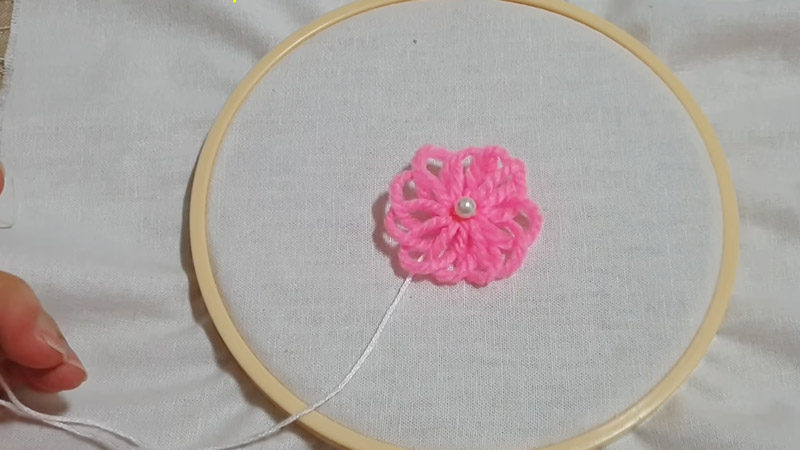
History of Wool Floss
The history of wool floss, as a specialized thread used in needlework and embroidery, is a journey through centuries of human creativity and craftsmanship. While specific records may be limited, the evolution of wool floss can be traced through various historical periods and regions:
Ancient Origins
The use of wool in textiles and needlework dates back to ancient civilizations. Wool was a readily available and versatile material, known for its warmth and durability.
People from regions with sheep farming, such as the Middle East and Europe, used wool for various textile arts, including weaving and embroidery.
Medieval and Renaissance Periods
During the Middle Ages and the Renaissance, embroidery and needlework flourished as an art form. Wool floss was particularly favored for ecclesiastical garments and tapestries, often showcasing intricate and colorful designs.
The Bayeux Tapestry, an embroidered historical narrative from the 11th century, is an iconic example of wool embroidery from this era.
Crewel Embroidery
In the 17th century, crewel embroidery gained popularity in England and America. Wool floss played a significant role in this technique, known for its intricate and textured designs. Crewelwork was used to adorn clothing, furnishings, and decorative items.
Victorian Era
The Victorian era saw a resurgence of interest in embroidery and needlework. Wool floss was commonly used for creating decorative pieces, emphasizing a rich and cozy aesthetic. Intricate floral and nature-inspired designs were especially popular during this period.
Modern Revival
Wool floss has experienced a resurgence in popularity in recent years. Modern needleworkers and textile artists appreciate the warmth, thickness, and unique textures it adds to their creations.
Contemporary designers and crafters have continued to innovate with wool floss, using it in various forms of needlework, from traditional embroidery to contemporary textile art.
What Is Wool Floss?

Wool floss is a specialized thread used in embroidery and needlework. It is distinct from conventional embroidery floss, as it is crafted from fine, natural wool fibers, making it thicker and softer.
This natural material choice imbues wool floss with a warm and cozy texture, setting it apart in the world of needlework. Its thickness, compared to standard embroidery floss, gives it a unique three-dimensional quality, perfect for creating textured and tactile designs.
Common applications include wool embroidery, tapestry work, needlepoint, and occasionally cross-stitch, where its plushness adds depth and character.
With a wide range of available colors, wool floss offers versatility and creativity in needlework projects, enhancing both visual and tactile appeal.
What Are the Characteristics of Wool Floss?
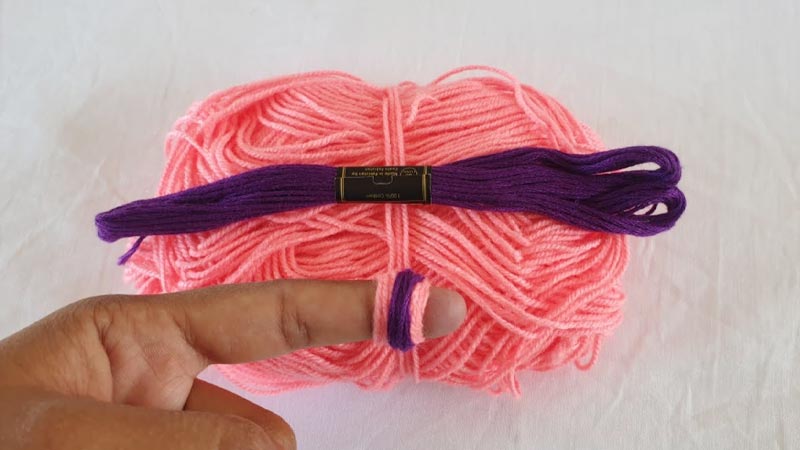
The characteristics of wool floss, a specialized thread used in embroidery and needlework, contribute to its distinct appeal and utility in various creative projects.
Here’s a detailed exploration of these key characteristics:
Thickness and Strength
Wool floss is notably thicker and stronger compared to standard embroidery floss, which is typically made from materials like cotton or silk. This thickness gives wool floss a unique advantage in creating a three-dimensional effect in your embroidery.
It can be particularly useful for achieving textured and tactile designs in your needlework.
Softness and Texture
Wool floss is crafted from fine, natural wool fibers, making it exceptionally soft and luxurious to the touch. Its natural warmth and plush texture add a cozy and inviting quality to your needlework projects.
This softness can be especially appealing for items such as decorative pillows, wall hangings, or any project where a soft and fuzzy texture is desired.
Color Variety
Like other types of embroidery floss, wool floss is available in a wide range of colors and sometimes patterns. This extensive color palette offers you a plethora of creative options, allowing you to add vibrant and intricate designs to your work.
Whether you’re stitching flowers, animals, or landscapes, the diverse color choices empower your artistic expression.
Versatility
Wool floss is not limited to one specific needlework technique. It can be used effectively in various applications, including wool embroidery, tapestry work, needlepoint, and occasionally even cross-stitch.
Its versatility allows it to enhance different types of projects, from creating elaborate tapestries to adding depth and character to more detailed needlepoint designs.
Eco-Friendly and Sustainable
Wool is a renewable and biodegradable material, making wool floss an eco-friendly and sustainable choice for environmentally conscious projects.
Knowing that you’re working with a natural and earth-friendly material can add an extra layer of satisfaction to your needlework endeavors.
What Are the Uses of Wool Floss?
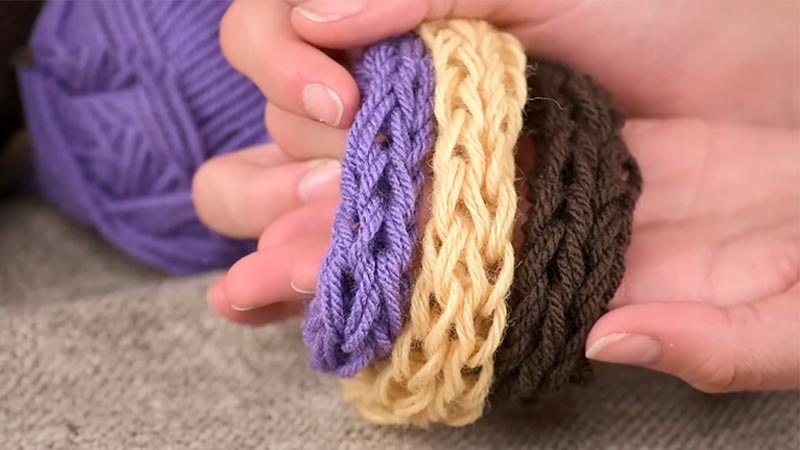
Wool floss is a specialized thread that serves various purposes in the world of needlework and embroidery, thanks to its unique characteristics.
Here are some common uses of wool floss:
Wool Embroidery
Wool floss is frequently employed in wool embroidery projects. Its exceptional thickness and soft, plush texture make it an excellent choice for adding depth and dimension to designs on woolen fabrics.
This is especially popular for creating cozy and decorative items such as blankets, scarves, and pillows, where the tactile and visual appeal of wool floss shines.
Tapestry Work
In tapestry, a form of textile art, wool floss is a staple. Using a vertical loom, artists create intricate woven designs, and the thickness and strength of wool floss make it an ideal choice.
Wool floss brings depth and texture to tapestries, making it perfect for crafting detailed and textured textile art.
Needlepoint
Wool floss is a common choice for needlepoint projects, which involve counted thread embroidery. In needlepoint, the canvas is fully covered with stitches, and wool floss is favored for filling spaces effectively and creating a soft, plush texture.
It is frequently used in creating needlepoint designs for items such as chair cushions, upholstery, and wall hangings.
Cross-Stitch
While cotton or silk floss is more typical for cross-stitch, some enthusiasts opt for wool floss to introduce a unique twist. Wool floss can add a different texture and warmth to cross-stitch patterns, making the final piece distinct and cozy.
What Are the Types of Wool Floss?
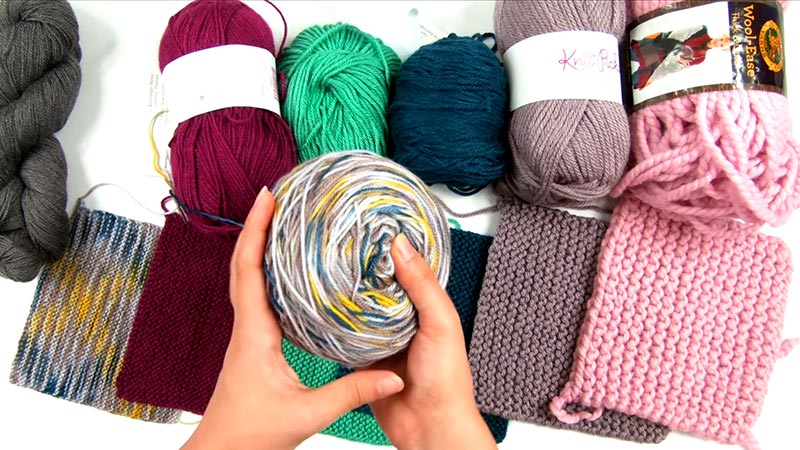
There are various types of wool floss available to cater to different preferences and project requirements. These types can be based on factors such as the composition of the wool, the texture of the thread, and its intended use.
Here are some common types of wool floss:
Stranded Wool Floss
This type of wool floss is composed of individual strands that can be separated according to the project’s thickness requirements. It offers versatility in achieving different textures and can be used for a wide range of embroidery techniques.
Persian Wool Floss
Persian wool is often used in needlepoint and tapestry work. It is known for its long, continuous strands that minimize the need for frequent thread changes. Persian wool floss typically comes in a limited color range but provides rich, vibrant colors.
Crewel Wool Floss
Crewel wool floss is a type of two-ply yarn used primarily in crewel embroidery. It is thicker and more textured than standard embroidery floss, allowing for the creation of bold and textured designs.
Latch Hook Wool
Latch hook wool is specifically designed for latch hooking projects, a technique that involves creating textured rugs or wall hangings. It’s usually a thick, fluffy wool yarn, making it perfect for achieving a cozy and tactile finish.
Blendable Wool Floss
Some wool floss varieties are designed to blend different colors within a single strand. This type of floss can create gradient or variegated effects in your needlework projects.
Fine Wool Floss
Fine wool floss is a thinner version of wool embroidery floss, suitable for more delicate or intricate embroidery projects. It is often used in crewel embroidery and other techniques where a finer texture is desired.
Hand-Dyed Wool Floss
Hand-dyed wool floss is precisely what the name suggests – wool floss that has been dyed by hand. This type of floss offers unique and artistically varied colors, perfect for one-of-a-kind and artisanal needlework projects.
How to Choose the Right Wool Floss for Your Project?
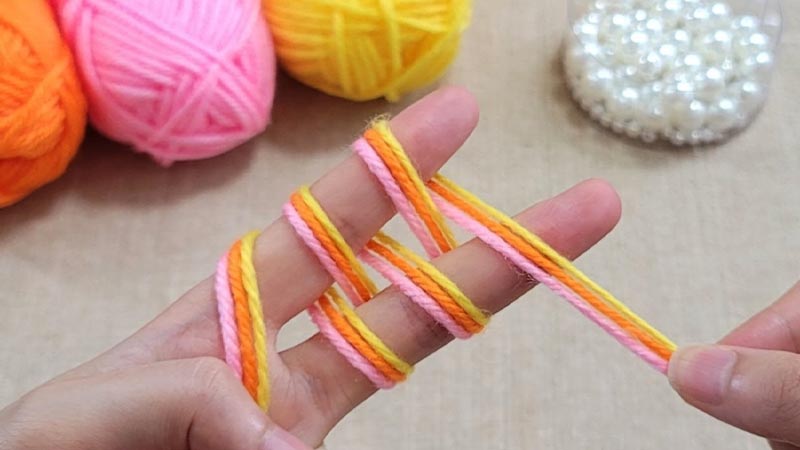
Choosing the right wool floss for your project is a critical decision that can greatly impact the outcome of your needlework.
Here are some key steps to guide you in making the best choice:
Define Your Project
Start by clearly defining the nature of your project. Determine whether you’re working on wool embroidery, tapestry, needlepoint, cross-stitch, or another needlework technique. Each of these has specific requirements in terms of thickness, texture, and thread type.
Consider Project Size
The size of your project plays a significant role in your choice of wool floss. For larger, more expansive projects, you might opt for thicker wool floss to effectively fill the space and add a rich, textured appearance.
Smaller, more delicate projects may benefit from finer wool floss, which allows for greater detail and precision.
Weight and Use
Think about the weight of the finished product. Some projects, like decorative pillows or wall hangings, should remain relatively lightweight. Thicker wool floss can add extra heft to your project, so select the thickness that aligns with your intended use.
Color Selection
Wool floss comes in a wide range of colors and sometimes patterns. Consider the color palette that suits your design. Whether you’re going for bold and vibrant or subtle and muted, the variety of colors available allows for creative expression.
Additionally, think about whether you want solid colors or variegated wool floss, which provides a gradient or multicolor effect.
Texture and Style
Contemplate the texture and style you want to achieve. Thicker wool floss contributes a soft and cozy appearance, while finer wool floss allows for intricate details and a smoother texture. The choice should align with your project’s aesthetic goals.
Environmental Considerations
If environmental responsibility is a concern, look for ethically sourced and sustainable wool floss options. Some suppliers offer certified organic wool, contributing to eco-friendly and sustainable needlework practices.
Sampling
Before starting your main project, it’s a good idea to create small samples using different types of wool floss. This allows you to assess how the floss interacts with your specific design, ensuring it meets your expectations.
Seek Expert Advice
Don’t hesitate to consult experienced embroiderers or fellow needlework enthusiasts. They can provide valuable insights and recommendations based on your project’s unique requirements.
FAQs
Is wool floss eco-friendly?
Yes, wool floss is eco-friendly due to its natural origin from renewable wool fibers, making it a sustainable and biodegradable choice for needlework.
Can I mix wool floss with other types of embroidery threads?
Yes, you can mix wool floss with other threads to create unique textural effects. Blending wool floss with different types of embroidery floss can add depth and interest to your needlework.
How does wool floss differ from standard embroidery floss?
Wool floss is thicker and softer compared to standard embroidery floss, which is typically made from materials like cotton or silk. This difference in texture and thickness allows for unique artistic and textural effects in needlework.
How do I care for wool floss projects to maintain their softness and texture?
To preserve the softness and texture of wool floss projects, it’s essential to follow proper care instructions. Typically, this includes gentle hand washing and flat drying to prevent distortion and maintain the softness of the wool.
Is wool floss suitable for all climates and seasons?
Wool floss is known for its warmth, which can be an advantage in colder climates. However, it may not be the ideal choice for extremely hot or humid environments, as it can become too warm. Adequate ventilation and storage are recommended in such conditions.
To Recap
Wool floss stands as a remarkable thread in the realm of embroidery and needlework, distinguished by its thickness, softness, and unique texture. Its history, dating back to ancient civilizations, reflects the timeless appeal of wool as a versatile and cozy material.
Whether you’re crafting intricate tapestries, adding depth to needlepoint designs, or creating textured, tactile wool embroidery, wool floss offers an opportunity for creative expression and warmth.
Its rich color palette and eco-friendly attributes contribute to its versatility and sustainability. With its ability to blend tradition with contemporary artistry, wool floss continues to be cherished by artists and crafters alike, providing a warm and inviting touch to their creations.
Leave a Reply